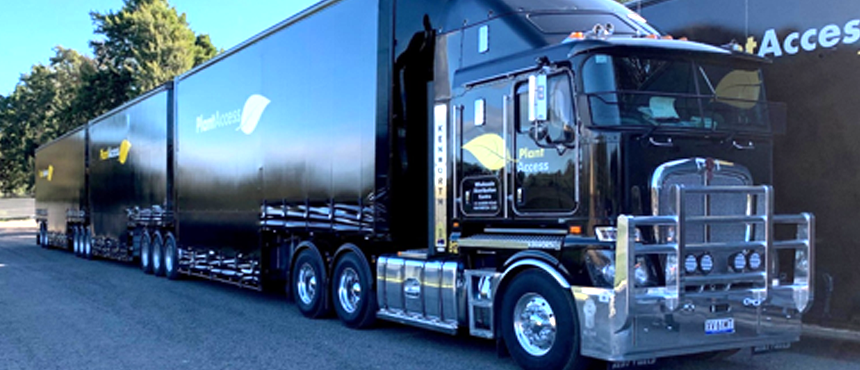Victorian PBS B-triple HPFV network published
Following the success of their 30-metre and 36.5-metre PBS A-double High Productivity Freight Vehicle (HPFV) networks, the Victorian Department of Transport has just released their 36.5-metre B-triple network.

The release of the new B-triple network in Victoria is another boom for the road freight industry. Similar to the existing A-double network, this B-triple network is expected to boost freight productivity in Victoria. Operators of existing B-double combinations are in a prime position to capitalise on the new network by incorporating a new trailer into their existing equipment.
Three reference B-triple designs were released, each with their own dimensional requirements and corresponding access network.
The three reference vehicles

Victorian PBS Level 3A B-triple – Reference Vehicle 1

Victorian PBS Level 3A B-triple – Reference Vehicle 2

Victorian PBS Level 3A B-triple – Reference Vehicle 3
These HPFV B-triple networks have been developed to unlock more productivity along the primary freight routes in Victoria. Each reference vehicle has its own network map with the same routes included in each network, and only the approved mass on critical bridges varies between the networks. The approved masses are dependent on the vehicle length. As Reference Vehicle 2 has the longest minimum lengths, it has the highest approved masses, while Reference Vehicle 3 has the lowest approved masses.
Access to roads not currently shown on the maps, whether they are managed by the Victorian Department of Transport or local councils, may also be requested and may be subject to route assessment by the relevant road manager.

Victorian PBS Level 3A B-triple – Reference Vehicle 3
Vehicles operating on the HPFV B-triple networks may be loaded up to Higher Mass Limits (HML) axle loads giving an overall Gross Combination Mass (GCM) of up to 91 tonnes. However, operation at 91 tonnes is not possible on some sections of the networks with limits as low as 68.5 tonnes. This is due to certain bridges throughout the networks not being suitable for heavier vehicles. These limits can be found by viewing the map for the reference vehicle in question and clicking on the red or orange dots that represent the restricted bridges.
As each reference vehicle has differing dimensions, each vehicle will have a different impact on bridges. This means that the maximum GCM permitted for a bridge can vary between the three networks. This is the reason why there are three different networks with identical routes.
HPFV operating conditions
The following conditions apply to vehicles operating on the HPFV B-triple networks:
- Vehicles must satisfy Level 3 Performance Based Standards
- A GPS device accredited under the Intelligent Access Program (IAP), or Telematics Monitoring Application (TMA) must be fitted
- A certified “On Board Mass” (OBM) system that can be integrated with IAP or TMA must be fitted
- An anti-lock braking system must be fitted on all axles
- Certified Road Friendly Suspension (RFS) must be fitted
- The vehicle must be accredited under the Mass Management module of the National Heavy Vehicle Accreditation Scheme
- The vehicle must display a road train warning sign at the front and rear
Access to the networks
At the time of publishing this news story, access to the B-triple networks is available via permit approval with a corresponding PBS Vehicle Approval complying with one of the reference vehicles. It is envisaged that the Victorian B-triple networks and reference vehicles will be incorporated into the PBS High Productivity Notice, by early December 2022 meaning complying combinations to the reference vehicle designs and Notice will be able to operate under the Notice once a PBS Vehicle Approval has been issued for the combination.
For more information, see the information sheet from the Victorian Department of Transport.
Contact Advantia if you would like to investigate PBS opportunities for your business.
Get more like this in your inbox
Subscribe to our Newsletter and never miss a post.